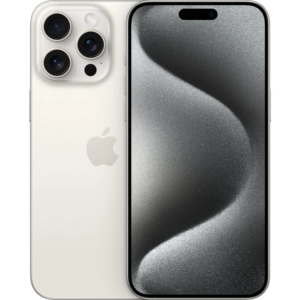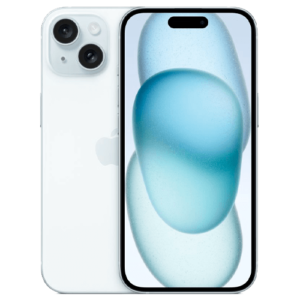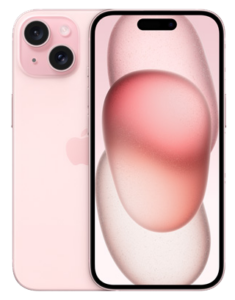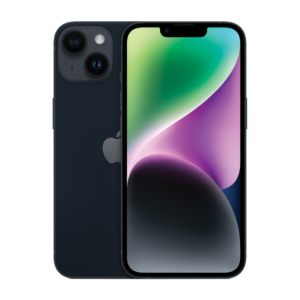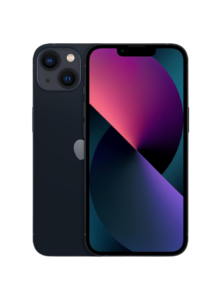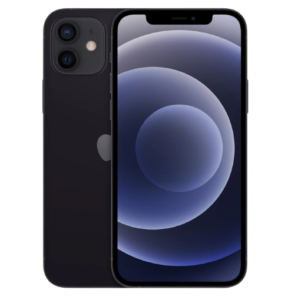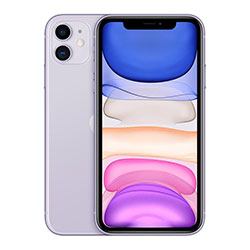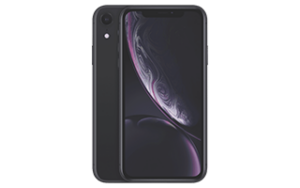Pictured: iPhone 15 Pro Max in Titanium Blue
iPhone 15 Pro Max review: 12 months later


Don't it always seem to go, that you don't know what you've got 'till it's gone?
Ever since the iPhone 14 Pro was released I’d slowly become accustomed to the super-fast 120Hz refresh rate of Apple’s premium handsets. Everyday operation is more fluid and reactive, and some games (like Marvel Snap) shine with the higher frame rate that Apple’s premium phones are capable of these days. But like many graphical upgrades, it’s hard to notice the technological leap in the moment. To fully appreciate the upgrade, you’ve got to go back to the way things were before.
I’ve spent almost as much time with the top-tier iPhone 15 Pro Max as I did with the entry point iPhone 15 ever since they both released in September 2023.
For the most part, the iPhone 15 satisfied my every smartphone need. I was quite fond of the icy blue colourway and I adapted to the smaller 6.1-inch display rather quickly. I didn't even miss the Action Button, one of the 15 Pro's exclusive features.
What I never got used to, however, was how sluggish the iPhone 15 felt after spending so much time with the high frame-rate offered by ProMotion.
Now, almost a year on, I'm convinced Apple is at the top of its game with the iPhone 15 Pro Max, which begs the question: where to next?

They paved paradise to put up a Genius Bar.
Gaming with A17 Pro
It’s easy to be cynical when Apple, Samsung and Google make a big song and dance about new phones that offer a slight upgrade from the year prior, but to its credit, Apple always knows how to put on a show when it demonstrates its hardware.
When the iPhone 15 Pro range was first revealed, one of the biggest surprises was the power of the A17 Pro chipset powering the device.
Performance updates start to lose meaning when you discuss ex-many more computations per nanosecond this year’s device has but for the iPhone 15 Pro announcement, Apple led with a corker. Not only was the A17 Pro the most powerful SoC (system on a chip) Apple had ever released (as it is every year,) but the A17 Pro was so powerful, in fact, that it could run blockbuster AAA games like Death Stranding, Assassin’s Creed Mirage and Resident Evil 4 Remake natively on the device.
Not streamed through services like Xbox Cloud Gaming, but ran locally on the device. Download it once and the console-quality game is yours to play on your iPhone, internet connection or not. It’s a huge development and one that, in my experience, isn’t just smoke and mirrors.
Sure, the quality isn't a 1:1 comparison, even when up against the last-gen Xbox One S. In order to achieve a more mobile-friendly install size, some sacrifices have been made across the range of titles. The differences are best outlined in the embedded Digital Foundry video below, where the benchmarking experts have compared the Assassin's Creed: Mirage iPhone port with its console counterparts. You're typically going to run into reduced asset quality (e.g. less detailed characters and environments,) and reduced frame rates but the compromises differ between titles.
Assassin's Creed Mirage - iPhone 15 Pro vs Console. Digital Foundry.
The fact remains that the ability to play a AAA game from 2023 on your iPhone is damn impressive and an exciting step forward for the future of mobile gaming.
There's no doubt the premium pricing for these ports and the Pro exclusivity contributed to the poor sales throughout 2024. Hopefully unlocking these titles on the standard iPhone 16 will make a difference to downloads but, realistically, the publishers are probably going to need to set a more sensible asking price for their ports if they want these AAA games to take off on the App Store.

Siri is still a little silly
After all these years, Siri is still struggling as a voice assistant. It's not always bad but when it gets it wrong, it gets it very wrong. Take navigation for example. My success rate for getting directions with Siri in Australia is so low, I'll often skip using it altogether and default to Waze. One example that consistently catches Siri up is navigating to Wyoming, a suburb on the Central Coast of Australia. After all these years, Siri still tries to send me to Wyoming in the US, drawing a big line from my location, over the Pacific Ocean, past California and Nevada before having a meltdown and declaring Maps as 'currently unavailable.'
Apple Intelligence is set to provide the additional smarts Siri has always needed, and while competing AI assistants like Google's Gemini don't inspire confidence, I'll take any improvements to Siri I can get.
Maximum Action

Speaking of features that won’t be exclusive to Pro much longer, let’s talk about the Action Button. After a year of using the iPhone 15 Pro Max, I’m sorry to say… well, I’m sorry to say I don’t have much to say at all.
The Action Button replaced the Silent Mode toggle; a trusty switch for silencing your iPhone. The beauty of the Silent Toggle was that you could see at a glance if your phone was silenced, thanks to a red indicator that showed when your phone was muted.
The Action Button replaced that toggle with a customisable pressure-sensitive button.
Sure, you could still use the Action Button to put your phone in Silent Mode, but if you prefer, you could also make it a dedicated flashlight, camera, magnifier or shortcut button. That sounds nice, but everyone I’ve asked so far has kept the Action Button as a Silent Mode button.
I did too for most of my time with the iPhone 15 Pro until one day when I thought “Hey, let’s mix things up for a change.” I, bravely, changed my Action Button’s function from Silent Mode to Camera.
Six months later, I still haven’t been able to break the habit of launching my camera from the lock screen, thus leaving my Action Button with little to no action at all. Not to mention the upcoming iPhone 16 range has a dedicated Camera Control button with even more functionality. In fact, all four iPhone 16 models will have both the Camera Control and an Action Button.
But that’s just my experience. The Action Button is still a great addition with a lot of potential to make the iPhone a more accessible device.
'Tis the C-son

iPhone 15 Pro Max USB-C port
USB-C on iPhone. Who’d have thunk it? I was and remain a staunch ‘Leaver’ when it comes to ditching the Lightning cable. Lightning was reliable enough in that you knew what you were getting most of the time in terms of charge time and compatibility but you always had to know if there was an ‘iPhone charger’ nearby to be truly at peace. Thanks to the ubiquity of USB-C, that’s less of a problem with iPhones these days.
As someone who drives a lot, I could have a landfill named in my honour for the number of Lightning cables I’ve had that eventually stopped working after a few weeks of precisely positioning the cable in a very specific orientation (the trick is to wrap the cable around the iPhone before plugging it in and to avoid all speed bumps.) It didn’t matter if it was an official Apple Lightning cable or something purchased in a pinch at my local servo, they all suffered the same fate eventually. More than anything, I’m happy to say that I purchased a USB-C to USB-A charger from my local petrol station the week the iPhone 15 Pro Max arrived and haven’t had to buy another since.
Still, USB-C can be confusing and not just to the general public. Standardising USB-C is all well and good but there are different types of USB-C that behave and perform differently.
Apple demonstrated just how confusing it can be when it launched the iPhone 15 range: while the iPhone 15 Pro and iPhone 15 Pro Max can technically support 10Gbps transfer rates via USB-C 3 (Thunderbolt 3,) it only comes with a USB-C 2 cable capable of 480Mbps in the box. You can technically record 4K video directly to an external hard drive with USB-C 3 but you will need the right cable to support it.
The thing is, there’s no easy way to tell which type of USB-C cable you’ve got as they all look identical and aren’t labelled in any way. Apple itself sells 60W USB-C charging cables and 240W charging cables. It also sells 30W USB-C power adapters but also 120W power adapters. If you were to head to Apple’s website right now, looking for a simple phone charger, you would be lost.
So yes, USB-C is confusing but it’s still for the best, ultimately. It opens up the iPhone to some insane possibilities that Lightning just never allowed for. Hardwire an internet connection via an Ethernet adapter, or plug directly into a digital camera or external hard drive to move high-resolution photos around without an internet connection. It’s practical in a way the internet has encouraged us to forget, which is nice. It gives you back a little bit of power, so to speak.

How healthy is my battery after 12 months?
After nearly 12 months, my battery health is at 91% of maximum capacity after 324 cycles (the number of times my iPhone 15 Pro Max has used its battery’s capacity.) Apple expects you to hit about 80% after 1,000 cycles in ideal conditions. I seem to be wearing down my battery a little faster than Apple would anticipate and I have noticed my battery being a little thirstier recently.
To be fair, I wasn’t as impressed with the iPhone 15 Pro Max’s battery life as I was with the iPhone 14 Pro Max or iPhone 13 Pro Max to begin with. Where I could typically get just over 7 hours of screen time on average with the 14 Pro Max and about a day and a half of everyday usage before needing a charge, I found the 15 Pro Max could last until the next day but started entering the danger zone well before midday. These days, if I don’t charge my iPhone 15 Pro Max overnight, I won’t wake up to a dead battery but I will be looking for the closest charger
That’s still a solid innings one year. Day to day, battery life is not something I’ve ever had any complaints about when it comes to the iPhone 15 Pro Max, but as time goes on, and the battery isn’t as virile as it once was, my wandering eye looks towards the iPhone 16 Pro range, which promises roughly two hours of extra screen time per charge.
Cameras

The most significant upgrade to the iPhone 15 Pro Max camera system is the bigger 120mm telephoto sensor and 5x optical zoom, compared to the iPhone 15 Pro's 77mm telephoto sensor with 3x optical zoom. The standard iPhone 15 and iPhone 15 Plus don't have a third telephoto sensor, and thus no optical zoom.
The difference is day and night when you compare the iPhone 15 Pro Max's 5x optical zoom with the iPhone 15's 5x digital zoom. As you can see in the two images below, the iPhone 15 Pro Max (left) captures significantly more detail and natural colours when zoomed in. The iPhone 15's digital zoom (right) is still pretty impressive, to be honest, but it's obvious where its shortcomings are; there's less detail in shadows and finer details, like the leaves on trees and cracks in rocks, dissolve into a blur the more crowded they are.
he biggest difference between the camera hardware is the missing third telephoto lens on the Pro models. The 15 Pro range does, however, have one very neat editing trick: the ability to adjust focus depth in post. This is a software solution that effectively adds or removes blur from the background as you move a slider and while it's not always useful, it's a fun party trick when it does work as you'd expect.
Low-light photos taken with the iPhone 15 Pro models have a slight advantage thanks to an upgraded Optical Image Stablisation (OIS,) but ultimately both the 15 and 15 Pro take a nice low-light shot thanks to some computational processing kicks in when the sun goes down.
The remaining differences between the iPhone 15 Pro Max's specs and the rest of the family are negligible. Below is a side-by-side comparison of a standard photo taken with the main 48MP shooter on the iPhone 15 Pro Max and the entry-level iPhone 15.
ProRAW and ProRes
iPhone 15 Pro Max camera samples
















Conclusion

After a year with the iPhone 15 Pro Max, I've come to the conclusion that it really only makes sense for people who just have to have that extra screen real estate. The additional camera perks are nice to have, particularly if you're in the profession, but they aren't going to make a world of difference to the majority of iPhone users. But that's just the slight Pro Max difference. The iPhone 15 Pro range, as a whole, is Apple at the top of its game. USB-C is a double-edged sword, Siri still needs improving and the Action Button could be a lot more useful, but these are small complaints about what is otherwise a refined version of everything Apple has done right since the iPhone 11. The 15 Pro Max itself isn't a revolutionary upgrade but it's building upon a rock-solid foundation.
It's easy to complain about these iterative annual updates but also where does Apple go from here? What do you give the iPhone that already has everything, other than better battery life? Apple and every other name in big tech seems to believe the answer lies in artificial intelligence, or more specifically generative AI. Samsung's Galaxy AI and Google's Gemini don't exactly inspire confidence but if Apple Intelligence can make Siri even a little bit smarter, I'll be thankful for that at least. But for now, the phone part of the Apple iPhone, and everything that includes, is better than it's ever been.
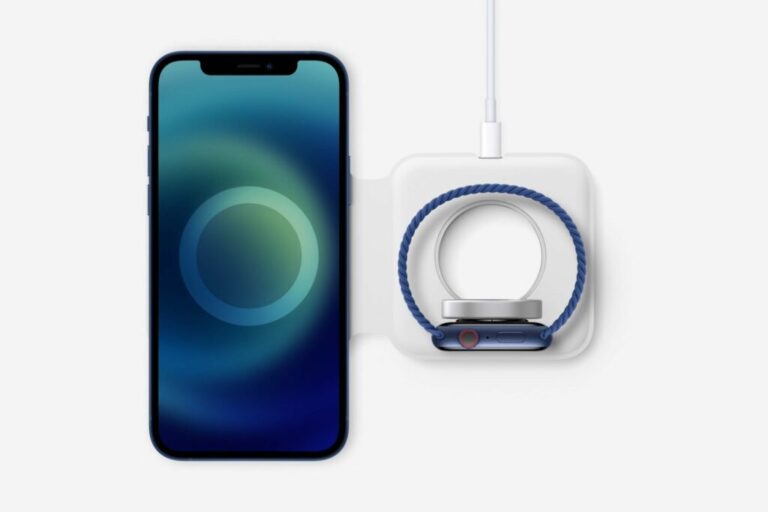
Need a charger to go with that iPhone?
Change up your charging setup with our guide to the best (and fastest) iPhone chargers you can find in Australia.
iPhone 15 Pro Max price and plans
How much does it cost in Australia?
With the release of the iPhone 16, the iPhone 15 range is cheaper than ever. Currently, the iPhone 15 Pro Max is 11% off at Amazon Australia. That brings the 256GB model (there isn't a 128GB Pro Max) down to $1,947 (from $2,199.) Alternatively, the 256GB iPhone 15 Pro Max is still available on a plan through Telstra, Optus and Vodafone, though possibly for not much longer.
How does this compare to the latest iPhone?
Related Articles









